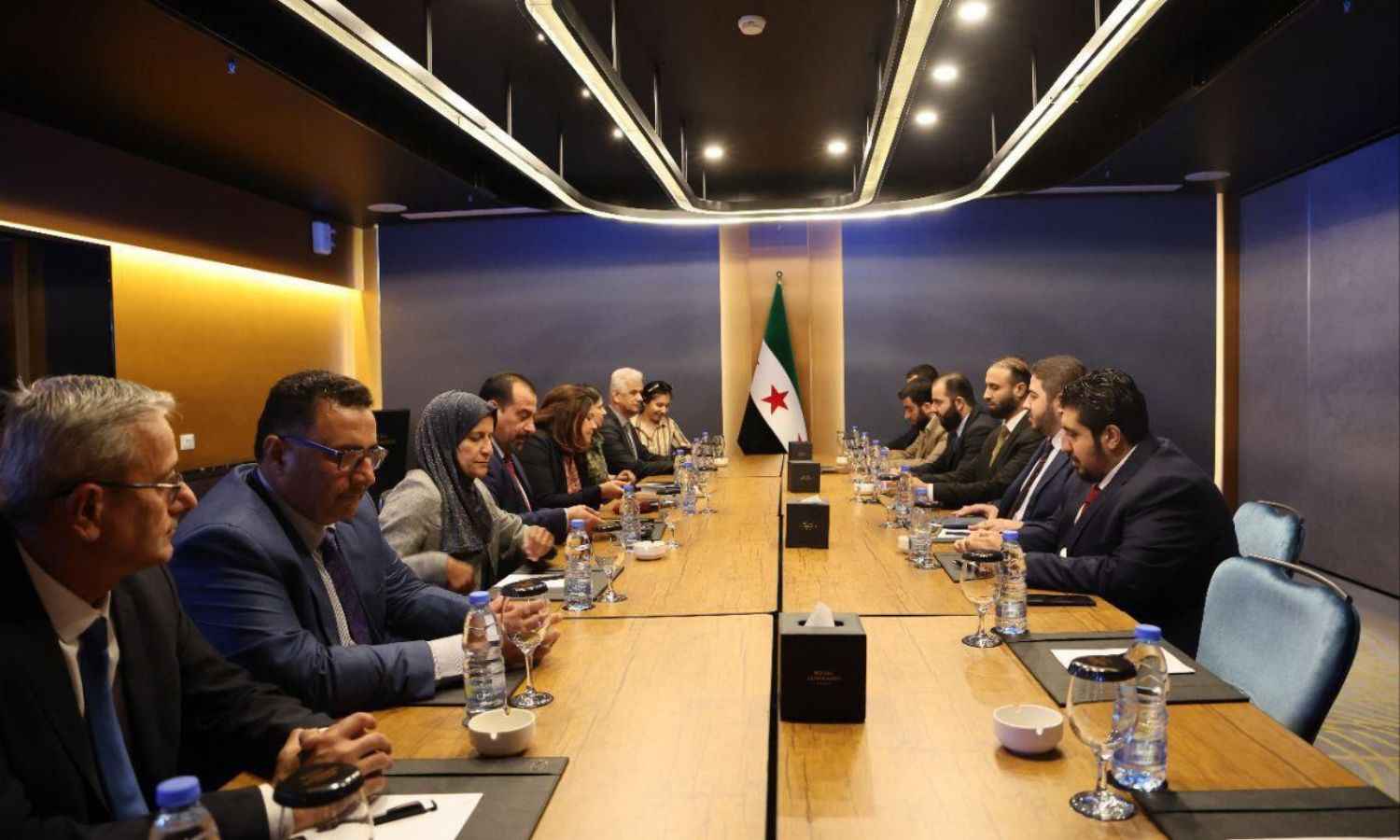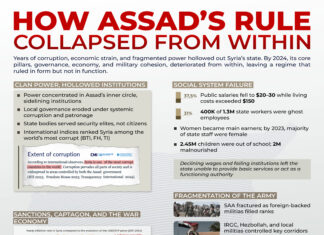
Syrian government officials and a delegation from the Autonomous Administration of North and East Syria (AANES) convened in Damascus on Sunday, June 1, for a formal round of negotiations aimed at implementing the March 10 agreement between President Ahmad al-Sharaa and Syrian Democratic Forces (SDF) Commander Mazloum Abdi.
The meeting, described by both parties as “positive and responsible,” signals the beginning of what could be the most significant institutional unification effort since the fall of the Assad regime in late 2024. It focused on core mechanisms to integrate AANES-administered regions into the state structure, with both sides emphasizing national unity and civil stability.
Brigadier General Ziad al-Ayesh, a key figure on the Syrian government’s implementation committee, told the Syrian Arab News Agency (SANA) that specialized subcommittees would be formed to carry out the agreement’s provisions. These bodies will oversee coordination on issues including administrative integration, civic services, and security arrangements.
Education and Return of Displaced Persons Take Priority
Among the most immediate concerns addressed was the state of education in formerly autonomous regions. Ayesh confirmed that both sides reached an understanding on maintaining exam schedules and protecting students’ academic rights during the transition. “Safeguarding the integrity of the educational process is a national responsibility,” he said.
The return of internally displaced persons (IDPs) also emerged as a key topic. Discussions centered on removing bureaucratic and logistical barriers to allow families displaced during years of conflict to return home. Both sides characterized this issue as central to restoring social cohesion and rebuilding trust in state institutions.
Reviving Aleppo Neighborhood Agreements
It was decided to reactivate and enforce prior security arrangements in the Sheikh Maqsoud and Ashrafiyeh neighborhoods of Aleppo—areas that had experienced periodic clashes between SDF forces and other armed groups. The move is viewed as a litmus test for broader cooperation in urban security management between Kurdish-led authorities and Damascus.
“The reimplementation of the Aleppo agreement is a step toward stability and civil peace in a sensitive area,” Ayesh stated, noting that both sides acknowledged the strategic significance of cooperation in these neighborhoods.
Unified Framework, Lingering Tensions
While AANES has long governed parts of northeastern Syria, the March 10 agreement calls for the full integration of its civilian and military structures—including control of border crossings, oil fields, and internal security—into the Syrian state by the end of 2025.
The Syrian presidency has framed the deal as a reaffirmation of national unity, cautioning against any moves toward partition or federalization. In a statement issued in April, the presidency stressed that “no group may monopolize representation or decision-making” in Syria’s northeast, and emphasized that all citizens’ rights are protected within a centralized, unified state.
SDF Commander Abdi has echoed this commitment, warning that failure to implement the agreement could risk renewed instability. He reiterated that the SDF supports “a unified Syria governed by democratic principles and inclusive representation.”
According to Ayesh, follow-up meetings are scheduled in the coming weeks to evaluate progress and address unresolved items. For now, the Damascus talks represent a significant, if cautious, move toward resolving Syria’s long-standing territorial and governance divisions.









